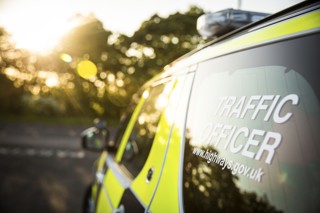The Driver and Vehicle Standards Agency (DVSA) will use Automatic Number Plate Recognition cameras to target drivers who break the law in a trial that will run until April 2020.
It will combine ANPR data with specialist analysis and intelligence to enforce a range of offences, including MOTs on cars and light goods vehicles; drivers’ hours offences; tachograph manipulation; and learner driver and instruction offences.
DVSA director of enforcement Marian Kitson said: “DVSA’s priority is to protect everyone from unsafe drivers and vehicles.
“We have some of the safest roads in the world but we are determined to do more to tackle those drivers who flout the law and endanger people’s lives.
“By trialling the use of the existing ANPR camera network, we are looking at how we can tackle illegal and dangerous drivers who put people’s lives at risk every day.”
With the evidence that ANPR data provides, offences will be more effectively detected, disrupted and deterred through fixed penalties, regulatory action from Traffic Commissioners, and even prosecutions, it said.
DVSA hopes that by punishing those who chose to be non-compliant, it helps ensure that they do not prosper over compliant operators.
The potential use of the ANPR system by DVSA was first highlighted by Commercial Fleet earlier this year. It had decided against investing in expensive equipment to read new smart tachographs remotely and said it was considering using the ANPR network.
Smart Tachographs, which become mandatory in all new registrations from June 15, herald a new era in the fight against lorry drivers driving when fatigued.
They are able to record the truck’s position when the driver starts his or her shift, then after every three hours of accumulated driving time.
They will also note the truck’s location at the end of the shift. The records will be expressed in terms of latitude and longitude and will be accurate to one-tenth of a minute.
A record is kept regardless of whether a digital tachograph card has been inserted or not. If it shows that a truck has arrived at point B having been at point A three hours previously and there is no evidence of the tachograph having been operated and a card used by whoever was behind the wheel, then questions are likely to be asked by the enforcement authorities.






















Login to comment
Comments
No comments have been made yet.